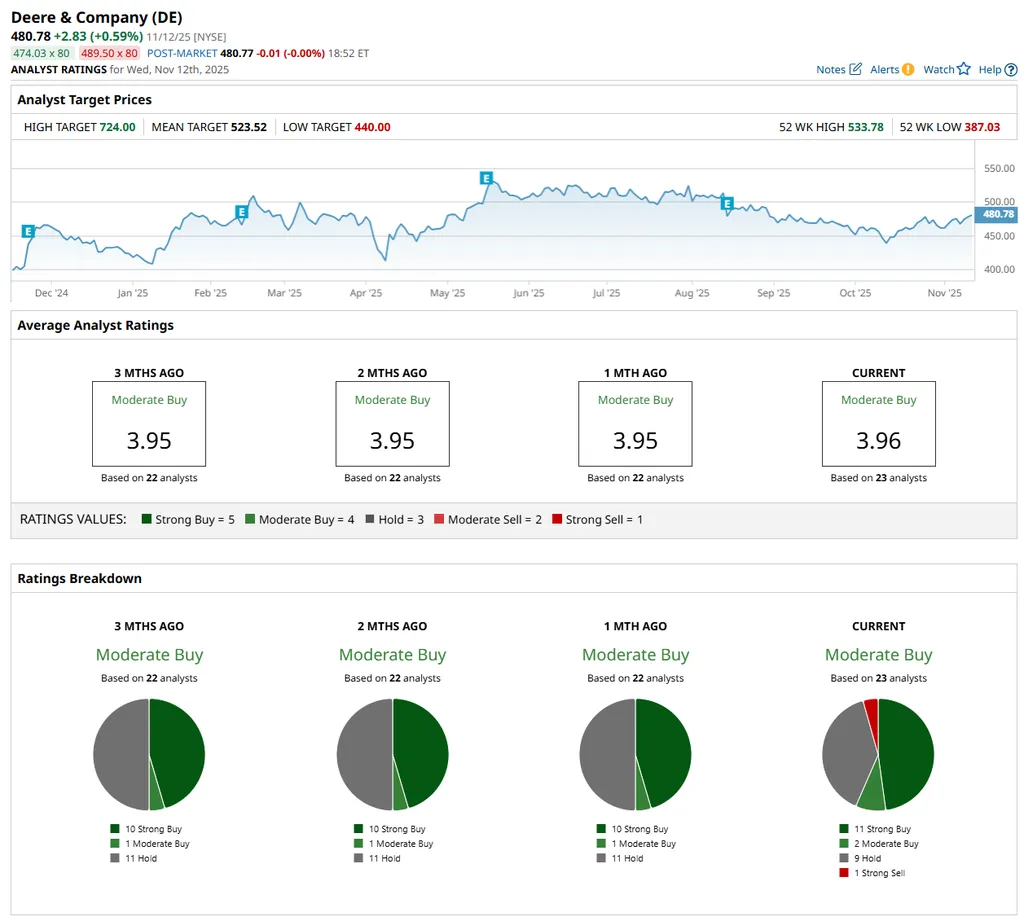Investors are increasingly scrutinizing Deere & Company (NYSE: DE) as a potential buy, with the stock’s recent performance and strategic moves sparking considerable interest. Year-to-date, Deere’s stock has climbed an impressive 13.2%, and it’s up 21.6% over the past year, despite a slight dip this week. The company’s push into precision agriculture technology and strategic partnerships has caught the eye of both investors and industry watchers, fueling new conversations about its future earnings potential and competitive edge.
According to valuation checks, Deere scores 3 out of 6 for being undervalued, suggesting there’s a case to be made for the stock. To better understand Deere’s valuation, let’s explore two common approaches used by analysts: Discounted Cash Flow (DCF) analysis and Price-to-Earnings (PE) ratio comparison.
The DCF model estimates a company’s fair value by projecting its future cash flows and discounting them back to present value. For Deere, the current Free Cash Flow is $4.83 billion, with analysts forecasting this figure to rise to $12.04 billion by 2029. By summing and discounting these expected future cash flows, the DCF analysis produces an intrinsic value estimate of $831.93 per share. At today’s prices, this suggests Deere stock is trading at a 43.1% discount to its calculated fair value, indicating that the stock is substantially undervalued based on this widely used valuation method.
Meanwhile, the PE ratio is a tried-and-true valuation tool for profitable companies like Deere. It helps investors gauge how much the market is willing to pay today for a dollar of the company’s earnings. Deere’s current PE ratio stands at 24.6x, which is in line with its industry average of 24.1x and close to its peer group’s average of 23.1x. This suggests that Deere is priced similarly to its direct competitors and the broader machinery sector on this metric. However, a more tailored approach, such as Simply Wall St’s proprietary “Fair Ratio,” digs deeper to estimate the most suitable PE for Deere given its unique blend of earnings growth, risk profile, profit margins, industry, and market cap. For Deere, the Fair Ratio calculates to 34.1x, indicating that the stock currently appears undervalued when assessed through this lens.
Beyond traditional valuation methods, investors can also consider Narratives, a more dynamic approach that combines personal perspectives and assumptions about a company’s future with projected numbers like future revenue, earnings, and margins. This approach allows investors to create their own fair value estimates and compare them with the current market price, helping them make more informed decisions about when to buy or sell.
As Deere continues to innovate and adapt in the rapidly evolving agricultural technology landscape, investors will be keeping a close eye on the company’s performance and strategic moves. With its stock currently appearing undervalued based on multiple valuation methods, Deere presents an intriguing opportunity for investors seeking exposure to the machinery industry and the growing precision agriculture sector. However, it’s essential to conduct thorough research and consider personal investment goals and risk tolerance before making any investment decisions.

